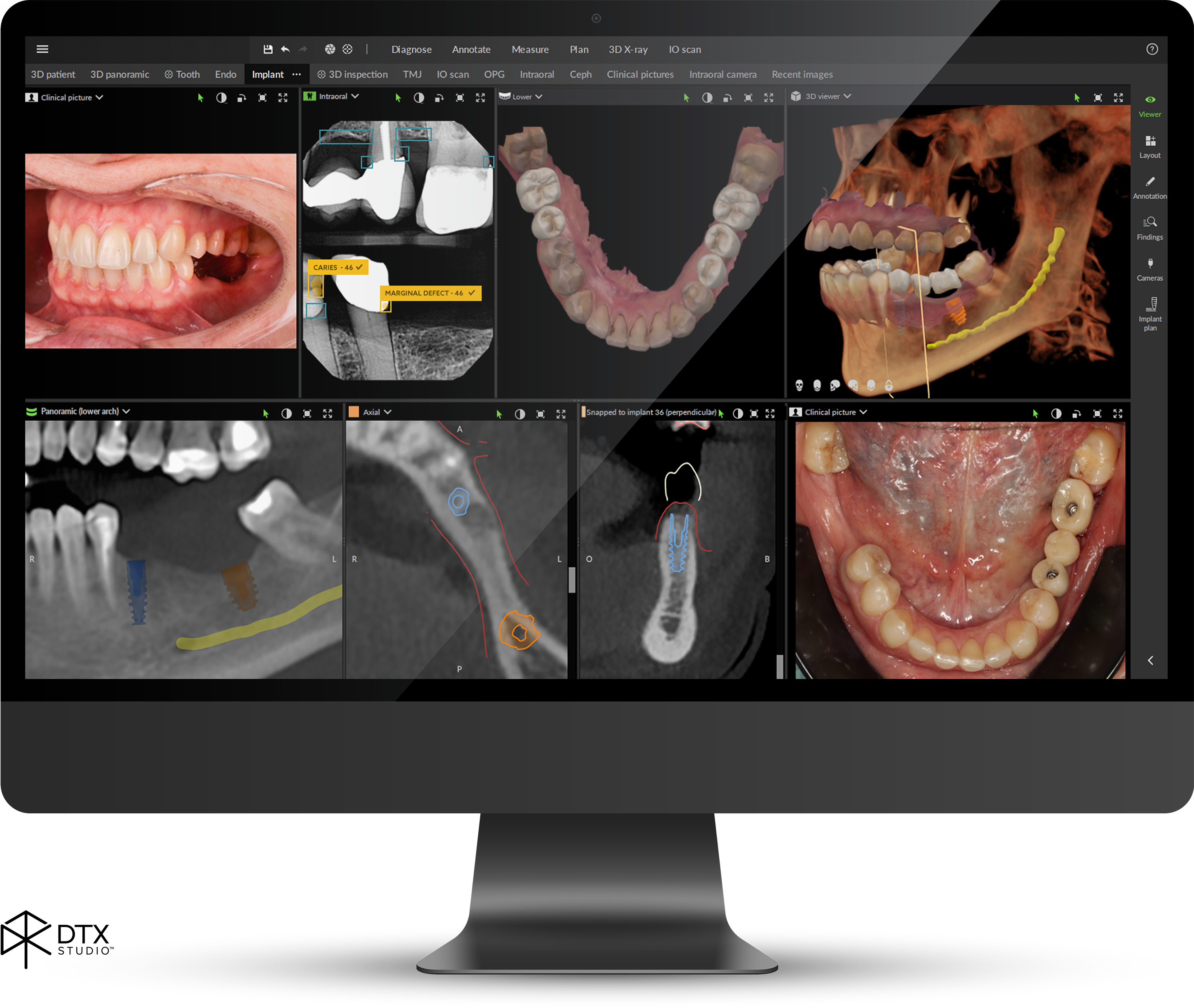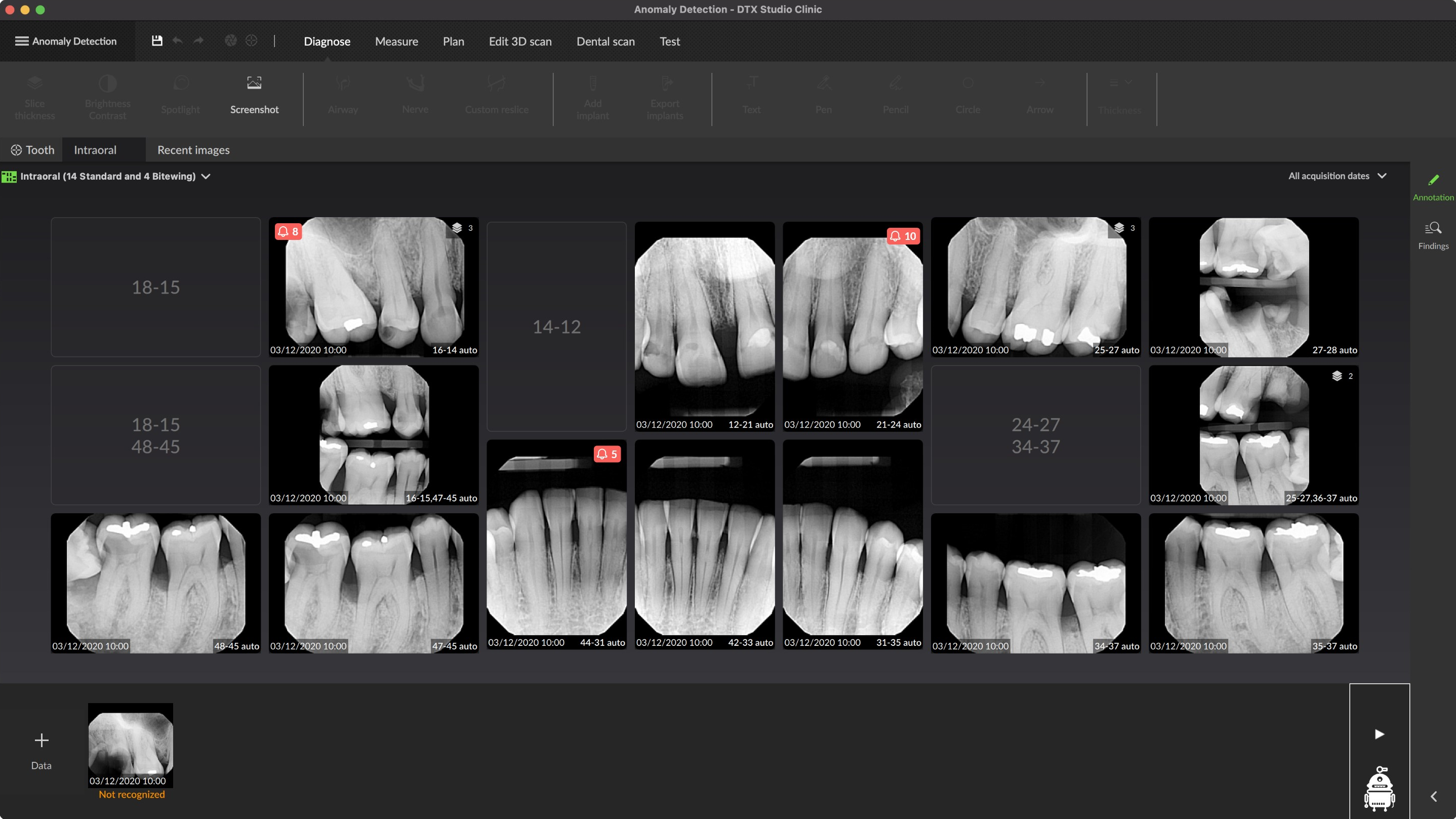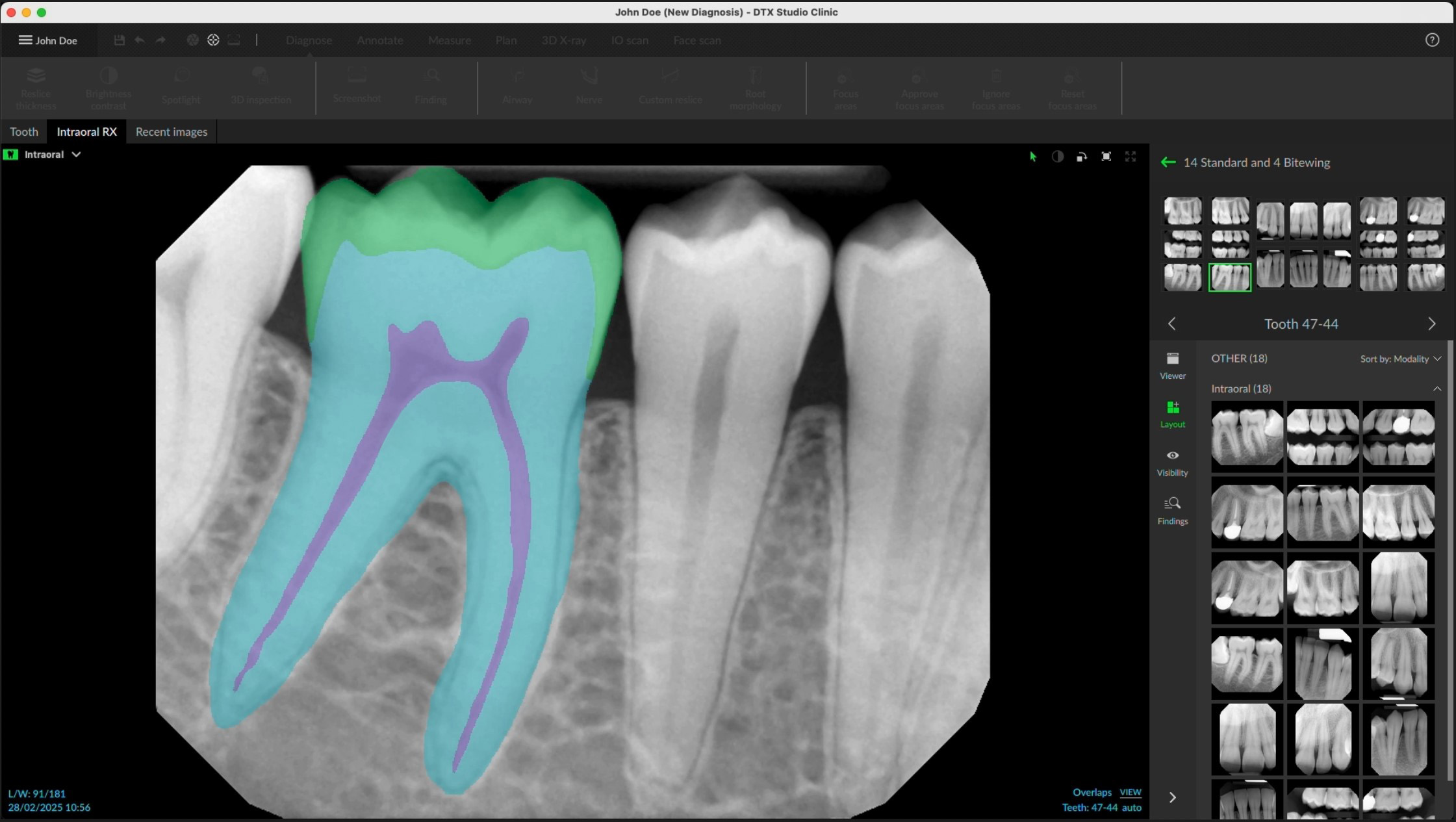So many phenomenal opportunities are available for dental offices from imaging to diagnostics, and juggling all of them can be exhausting. That’s where DTX Studio™ Clinic comes to the rescue—it’s an ecosystem that integrates imaging modalities so that you can provide the best options for your patients. I’d like to introduce our readers to a system that won the coveted Cellerant Best of Class Award in 2021, 2022, and 2023. With DTX Studio organizing the information and providing integral data for complete diagnosis and treatment planning, clinicians can concentrate on the patient in the chair. I spoke with Jordan Reiss, Senior Director, Clinical Strategic Development with DEXIS, to find out more about how it works to benefit clinicians and patients.
Lou Shuman (LS): What is DTX Studio?
Jordan Reese (JR): DTX Studio helps to centralize many technologies in dental offices today. The single platform standardizes and streamlines diagnostic imaging technologies that are used so many times on a daily basis, even across multiple locations, and leverages new technologies when they are added. The AI-powered software merges, organizes, and displays 2D and 3D x-rays, clinical photos, and extraoral and intraoral imaging in one place, providing a smooth diagnostic workflow from treatment planning and treatment implementation.

LS: Modern offices often have different forms of technology. Do all of your systems have to be from DEXIS to use the ecosystem?
JR: While we would be ecstatic if everyone chose DEXIS products, we know that dental offices can have many software programs just dedicated to imaging. The cost of maintaining all of those systems individually is high, and so is the stress level when a problem arises and you have to jump through many tech hoops to find the source and the solution. There is not only a monetary cost, but downtime can interrupt your workflow and ability to treat patients, who do not like to be kept waiting in the chair while the assistant is on hold with the IT guy trying to figure it out.
Of course, we highly recommend DEXIS imaging modalities, and there are many recognized brands to choose from such as Instrumentarium, i-CAT™, Soredex™, Gendex™, Nomad™, and intraoral scanning solutions from Carestream Dental. After all, our company has held number one place in imaging market share in the United States for many years.
LS: So say I have several imaging modalities — how can I make using them less complicated?
JR: Choice is at the center of the DTX Studio philosophy. We would like for you to use one of the systems that I just mentioned, but you don’t have to. I call it “BYOD — bring your own device.” Offices can load up to five different imaging software programs into DTX Studio. Then its AI-powered software merges, organizes, and displays 2D and 3D x-rays, clinical photos, and extraoral and intraoral imaging in one place, from any system, and in any operatory. This smooth clinical workflow benefits all phases of treatment and treatment planning.

LS: How does it help with diagnostics?
JR: Consider the value of being able to focus on the patient while the features in DTX Studio organize all of the data. SmartLayout™ and SmartFocus™ integrate the 2D and 3D imaging history and automatically orient and position images in doctor-specified radiographic mounts. The clinician can choose to use tooth-by-tooth navigation and also use SmartFusion to combine CBCT scans with intraoral scan data. We all realize the importance of locating the mandibular nerve and the TMJ complex. The Magic Assist feature can automatically identify nerve canals, recognize the teeth, reposition the patient’s head, and trace out the upper and lower panoramic curves.
LS: How does the AI work?
JR: The 2D AI findings tool automatically identifies up to six common dental findings on 2D radiographs (caries, calculus, periapical radiolucency, root canal defect, discrepancy at the margin of an existing restoration, and bone loss) and then labels those defects. Even though the platform is powered by AI, clinicians still retain operational and diagnostic control. So, the doctor can either designate an indicated tooth as a focus area or choose to ignore the finding. Colorful graphics help patients visually understand information that without clinical training would otherwise be confusing. In addition, the AI label validates the doctor’s diagnostics — it’s like a like spell check or a second opinion that can lead to case acceptance. It presents a very powerful view.

LS: Does DTX Studio have any features specifically for specialties?
JR: Absolutely. There are workflow spaces for implants, TMJ, airway, and endodontics. For example, DTX Studio Clinic supports same-day, prosthetically-driven implants. With the help of AI, dentists can virtually extract teeth and set up a visual treatment plan, including photorealistic crown, abutment, and implant. And its fast — as little as three minutes from surgical template creation to STL export for local production printing. Then after the file is saved, it can be accessed from every computer in the practice.
For endodontics, AI can indicate landmarks in a specific tooth, such as the portal of exit, and the image can be rotated around for excellent visualization in both the 3D rendering and 2D MPR planes very easily. If the information is needed by a specialist or lab, the web-based cloud portal can securely send information with just a few clicks.
We also are proud of our third party integration and partnerships with SprintRay, X-Guide, and Smile, a patient engagement platform. Industry standard files all can be accepted and all can be exported so you can share with colleagues that don’t have DTX Studio. These partners can simplify the design and fabrication of models, crowns, bridges, and surgical guides for in-house printing for more efficient, accurate, and predictable workflows.
LS: Do you have to be really good at technology to benefit from the ecosystem?
JR: No, that is the beauty of this system. It is useful for dentists at any technology level or at any stage in their career—from doctors nearer to retirement, those who just started to practice, or multi-specialty offices. It keeps all of the vital information organized and available.
LS: What back up do clinicians have for this ecosystem?
JR: We provide training and education, clinical trainers, and regional support for our dealers. When you are a large company like we are, we can apply resources to the right areas and even share and collaborate between dentists. This proactive support enhances the in-chair experience, builds stronger patient relationships, and educates patients on the importance of completing treatment — and as a result of that process, we hope to enable the future of dentistry.
